|
|
|

|
|||||

|
|

Elevator manufacturer Otis (NYSE:OTIS) beat Wall Street’s revenue expectations in Q3 CY2025, with sales up 4% year on year to $3.69 billion. The company expects the full year’s revenue to be around $14.55 billion, close to analysts’ estimates. Its non-GAAP profit of $1.05 per share was 4.7% above analysts’ consensus estimates.
Is now the time to buy Otis? Find out by accessing our full research report, it’s free for active Edge members.
Credited with inventing the first hydraulic passenger elevator, Otis Worldwide (NYSE:OTIS) is an elevator and escalator manufacturing, installation and service company.
A company’s long-term performance is an indicator of its overall quality. Any business can experience short-term success, but top-performing ones enjoy sustained growth for years. Over the last five years, Otis grew its sales at a sluggish 2.6% compounded annual growth rate. This fell short of our benchmarks and is a poor baseline for our analysis.
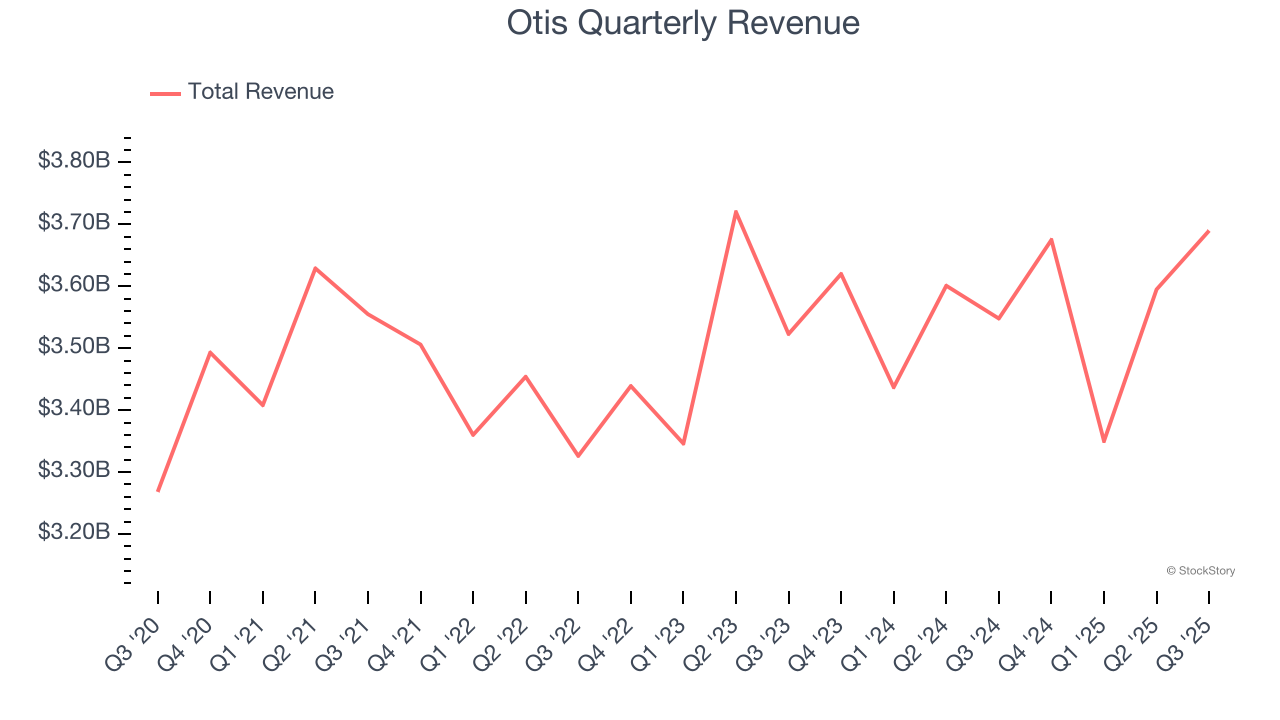
Long-term growth is the most important, but within industrials, a half-decade historical view may miss new industry trends or demand cycles. Otis’s recent performance shows its demand has slowed as its annualized revenue growth of 1% over the last two years was below its five-year trend.
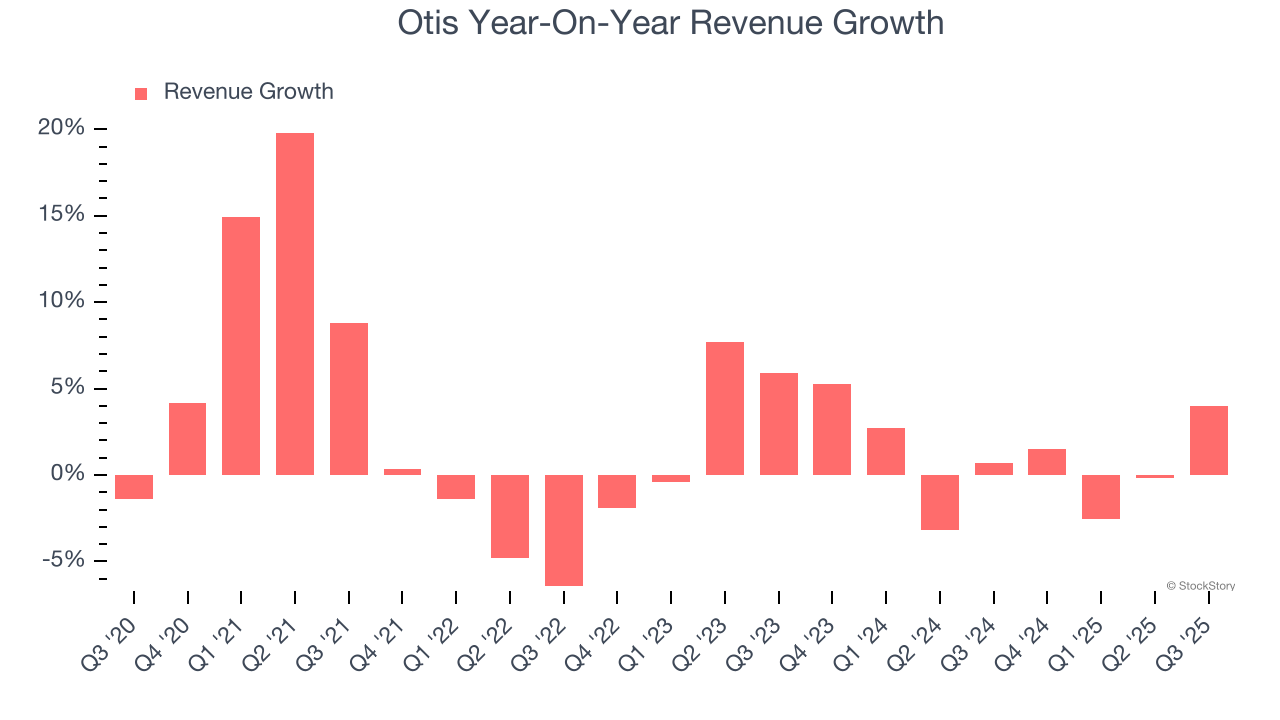
Otis also reports organic revenue, which strips out one-time events like acquisitions and currency fluctuations that don’t accurately reflect its fundamentals. Over the last two years, Otis’s organic revenue averaged 1.2% year-on-year growth. Because this number aligns with its two-year revenue growth, we can see the company’s core operations (not acquisitions and divestitures) drove most of its results.
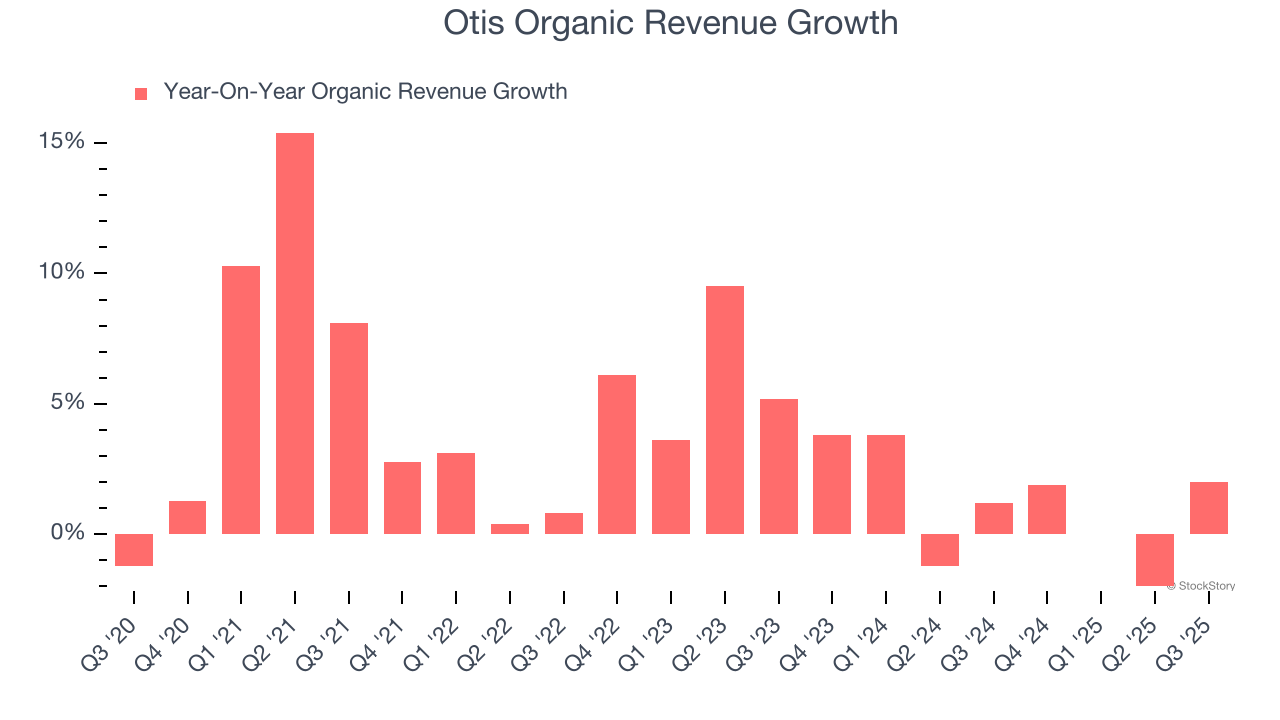
This quarter, Otis reported modest year-on-year revenue growth of 4% but beat Wall Street’s estimates by 1.2%.
Looking ahead, sell-side analysts expect revenue to grow 4.1% over the next 12 months. Although this projection indicates its newer products and services will catalyze better top-line performance, it is still below the sector average.
Software is eating the world and there is virtually no industry left that has been untouched by it. That drives increasing demand for tools helping software developers do their jobs, whether it be monitoring critical cloud infrastructure, integrating audio and video functionality, or ensuring smooth content streaming. Click here to access a free report on our 3 favorite stocks to play this generational megatrend.
Operating margin is one of the best measures of profitability because it tells us how much money a company takes home after procuring and manufacturing its products, marketing and selling those products, and most importantly, keeping them relevant through research and development.
Otis’s operating margin might fluctuated slightly over the last 12 months but has remained more or less the same, averaging 14.7% over the last five years. This profitability was top-notch for an industrials business, showing it’s an well-run company with an efficient cost structure. This result was particularly impressive because of its low gross margin, which is mostly a factor of what it sells and takes huge shifts to move meaningfully. Companies have more control over their operating margins, and it’s a show of well-managed operations if they’re high when gross margins are low.
Looking at the trend in its profitability, Otis’s operating margin might fluctuated slightly but has generally stayed the same over the last five years. This raises questions about the company’s expense base because its revenue growth should have given it leverage on its fixed costs, resulting in better economies of scale and profitability.
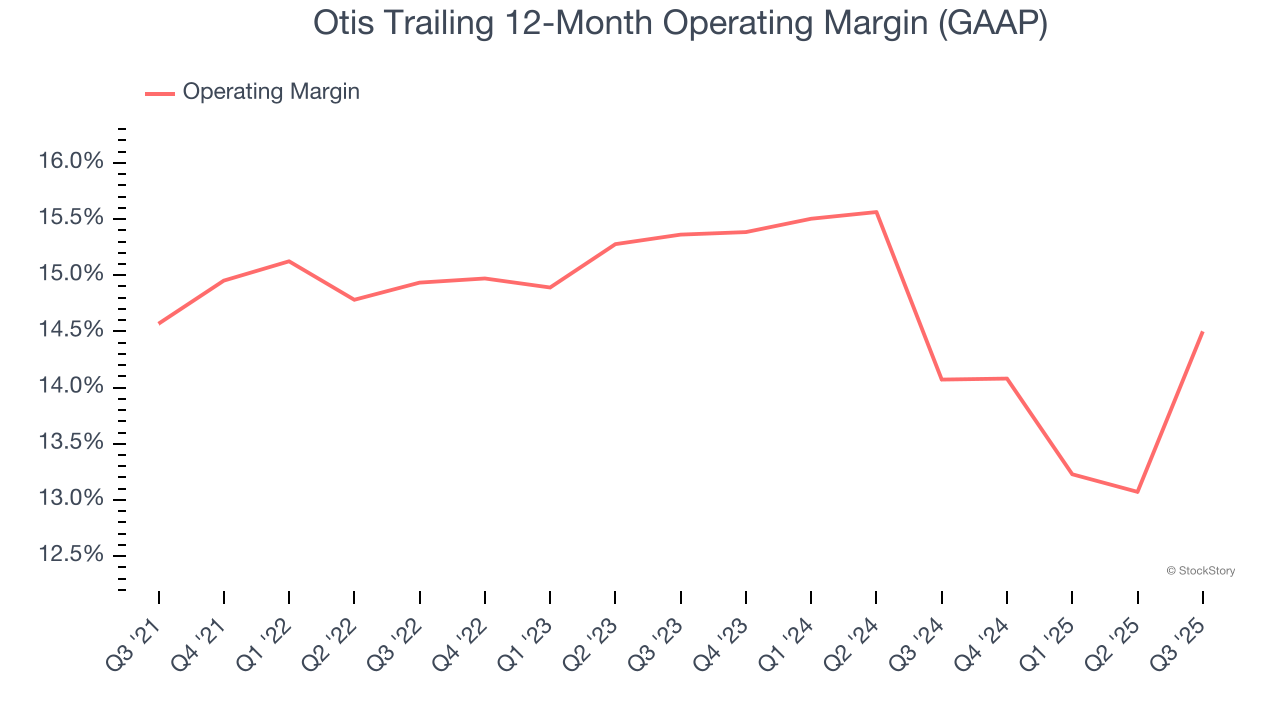
This quarter, Otis generated an operating margin profit margin of 15.9%, up 5.6 percentage points year on year. The increase was solid, and because its operating margin rose more than its gross margin, we can infer it was more efficient with expenses such as marketing, R&D, and administrative overhead.
We track the long-term change in earnings per share (EPS) for the same reason as long-term revenue growth. Compared to revenue, however, EPS highlights whether a company’s growth is profitable.
Otis’s EPS grew at a remarkable 13.1% compounded annual growth rate over the last five years, higher than its 2.6% annualized revenue growth. This tells us the company became more profitable on a per-share basis as it expanded.
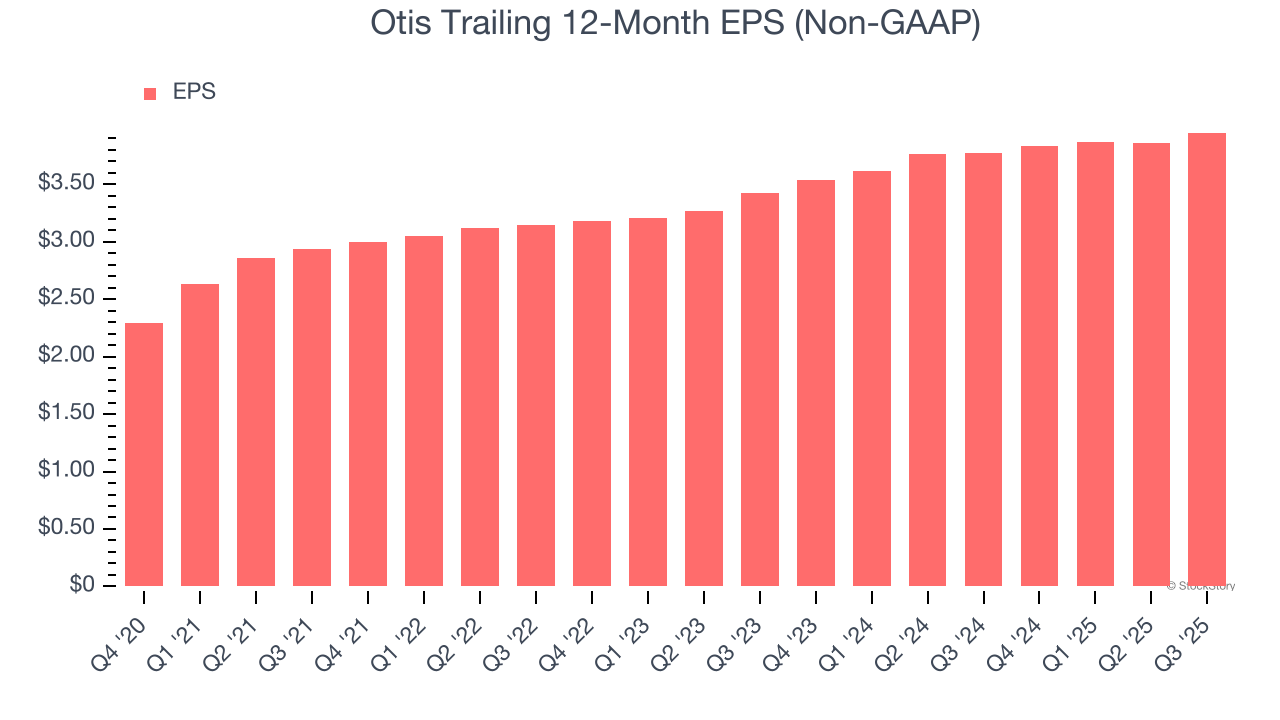
We can take a deeper look into Otis’s earnings to better understand the drivers of its performance. A five-year view shows that Otis has repurchased its stock, shrinking its share count by 9.7%. This tells us its EPS outperformed its revenue not because of increased operational efficiency but financial engineering, as buybacks boost per share earnings.
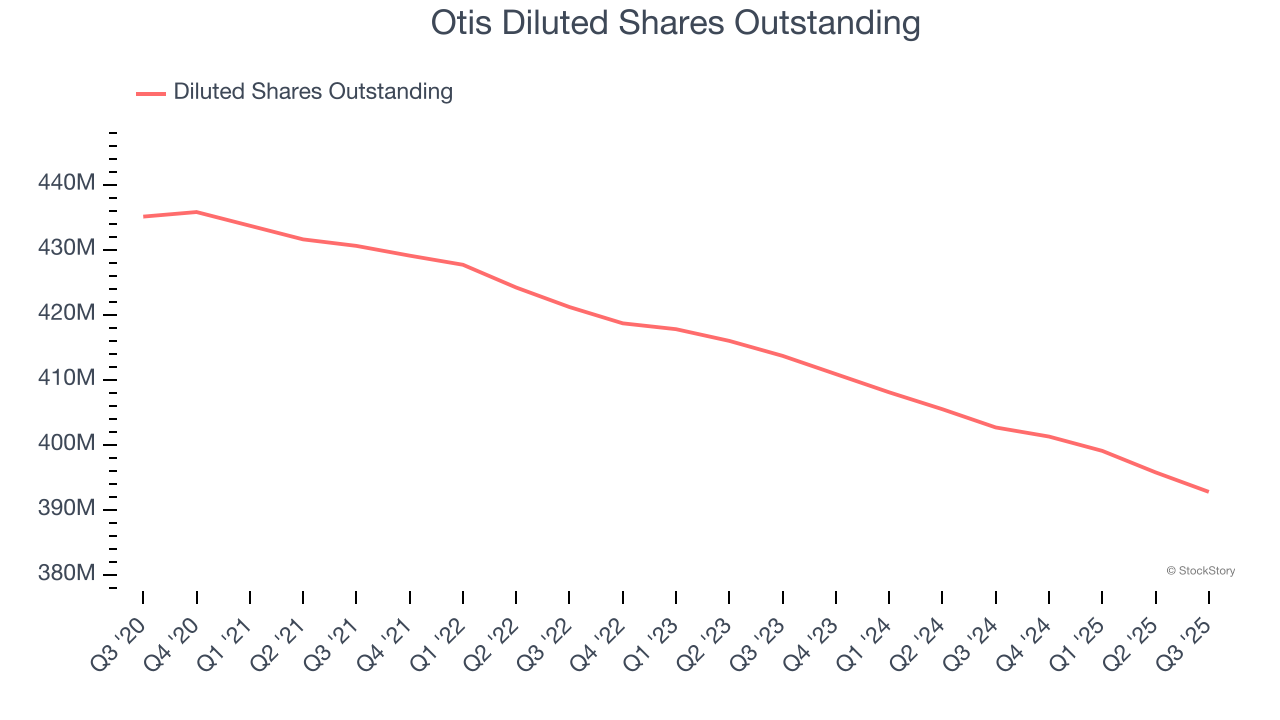
Like with revenue, we analyze EPS over a more recent period because it can provide insight into an emerging theme or development for the business.
For Otis, its two-year annual EPS growth of 7.5% was lower than its five-year trend. We hope its growth can accelerate in the future.
In Q3, Otis reported adjusted EPS of $1.05, up from $0.96 in the same quarter last year. This print beat analysts’ estimates by 4.7%. Over the next 12 months, Wall Street expects Otis’s full-year EPS of $3.95 to grow 7.9%.
It was good to see Otis narrowly top analysts’ revenue and EPS expectations this quarter. We were also happy its organic revenue narrowly outperformed Wall Street’s estimates. Overall, this print had some key positives. The stock traded up 3.1% to $94.15 immediately after reporting.
Is Otis an attractive investment opportunity at the current price? We think that the latest quarter is only one piece of the longer-term business quality puzzle. Quality, when combined with valuation, can help determine if the stock is a buy. We cover that in our actionable full research report which you can read here, it’s free for active Edge members.
| Dec-09 | |
| Dec-05 | |
| Dec-04 | |
| Nov-28 | |
| Nov-19 | |
| Nov-12 | |
| Nov-05 | |
| Oct-31 | |
| Oct-30 | |
| Oct-30 | |
| Oct-29 | |
| Oct-29 | |
| Oct-29 | |
| Oct-29 | |
| Oct-29 |
Join thousands of traders who make more informed decisions with our premium features. Real-time quotes, advanced visualizations, backtesting, and much more.
Learn more about FINVIZ*Elite